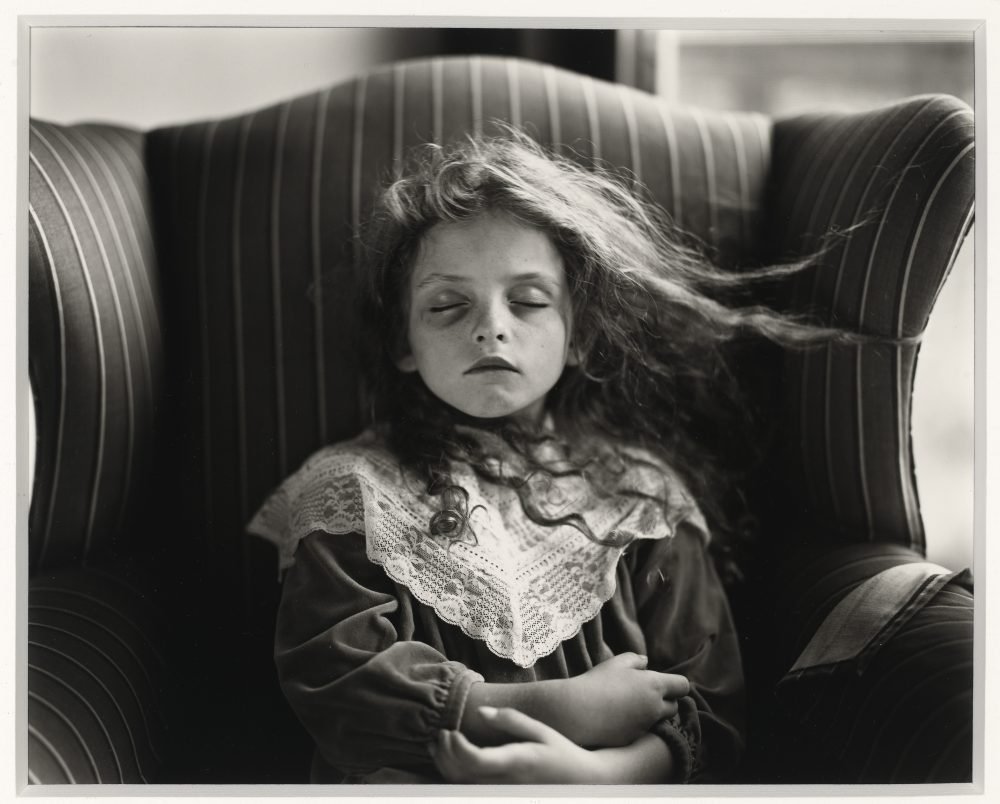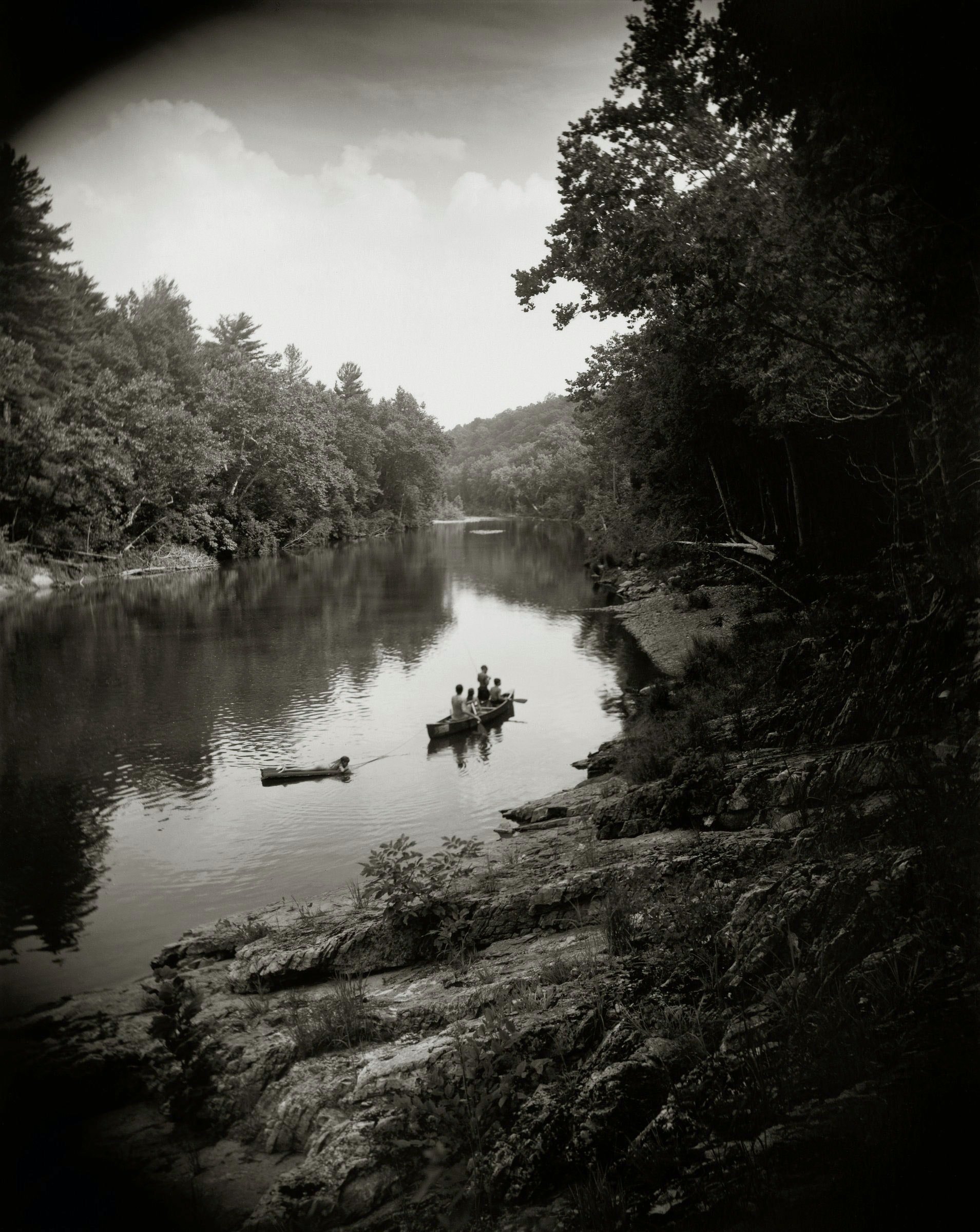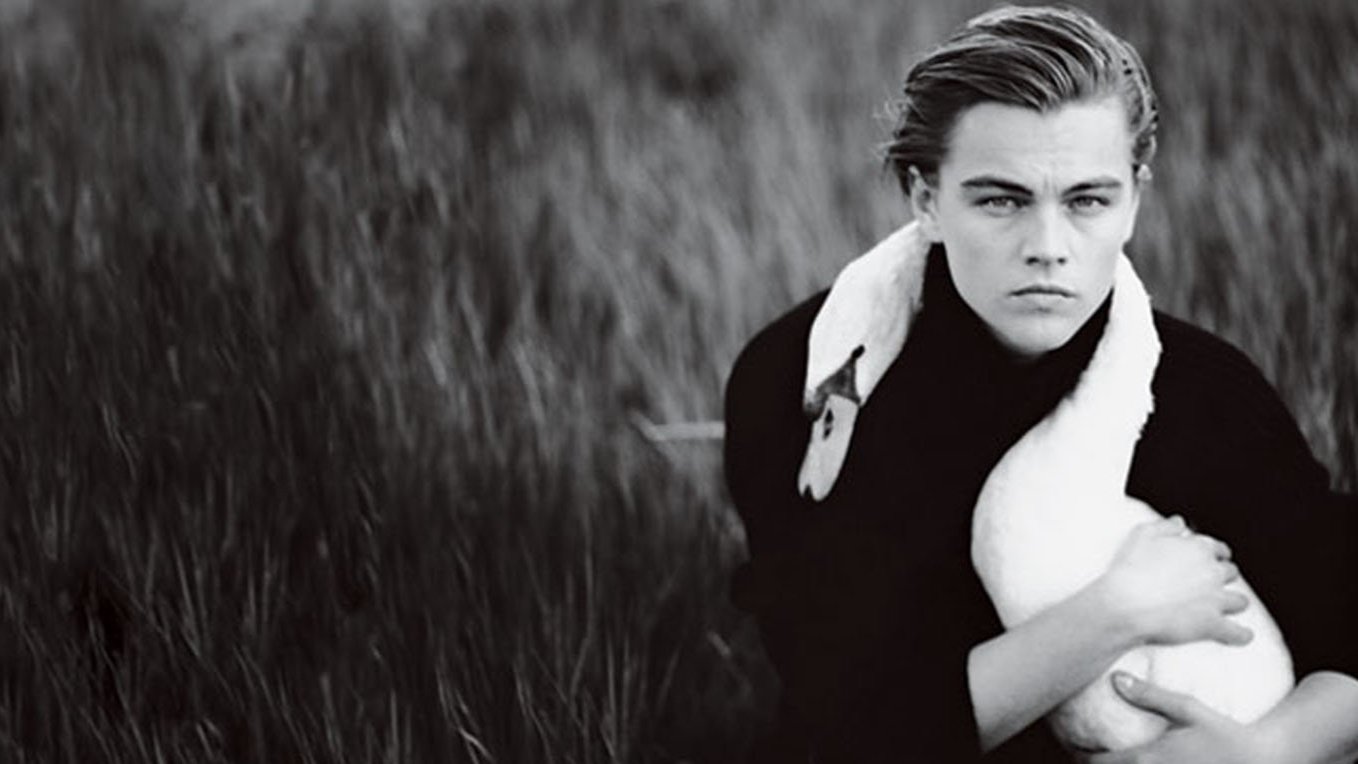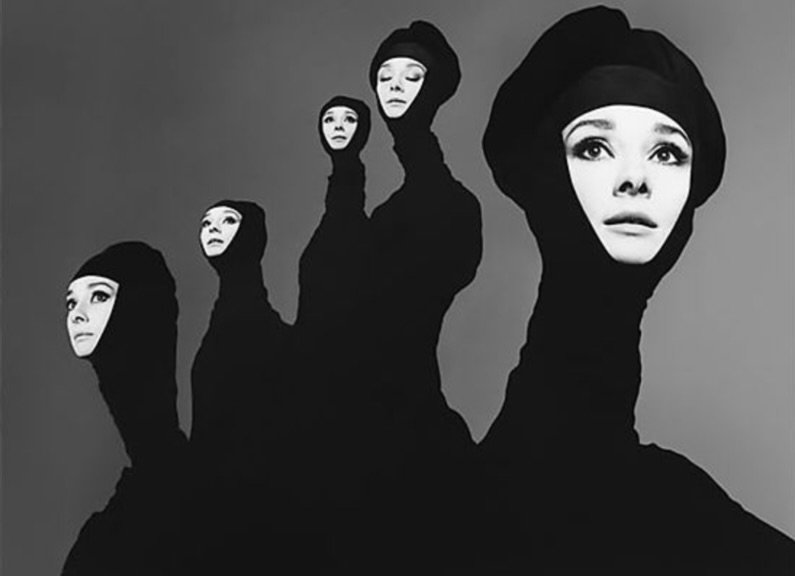Sally Mann
“Photographs open doors into the past, but they also allow a look into the future.”
Sally Mann is an American photographer renowned for her captivating and often controversial images that explore themes of family, childhood, and the passage of time. With a career spanning over four decades, Mann's work has earned her a place among the most influential fine art photographers of her generation.
Early Life and Career
Born in Lexington, Virginia, in 1951, Sally Mann discovered her passion for photography at a young age. She attended the Putney School in Vermont and later pursued a Bachelor's and a Master's degree in creative writing at Hollins University in Roanoke, Virginia. During her time at Hollins, Mann studied photography and began to develop her unique style and approach to the medium.
Photographic Style and Techniques
Mann's photographic style is characterized by her ability to capture deeply intimate and emotional moments. Her black-and-white images often possess a haunting, ethereal quality, revealing the vulnerability and fragility of her subjects. Throughout her career, she has primarily used large-format cameras and alternative photographic processes, such as wet plate collodion, which lends her images a timeless, painterly appearance.
Career Highlights
Sally Mann gained widespread recognition in the early 1990s with her series "Immediate Family," which featured candid photographs of her three children. The series sparked controversy due to the nudity and provocative poses of her young subjects. Despite the controversy, "Immediate Family" solidified Mann's reputation as a fearless and thought-provoking artist.
Mann's later work has explored themes of mortality, memory, and the Southern landscape. Her series "Deep South" (1998) and "What Remains" (2003) examine the complex history of the American South and the cycle of life and death. In 2015, she released a memoir, "Hold Still: A Memoir with Photographs," which delves into her personal life and the stories behind her most iconic images.
Photography Gear
Sally Mann's equipment choices have played a significant role in shaping her photographic style. Over the years, she has used:
Large-format cameras, such as the 8x10 Deardorff view camera
Wet plate collodion process
Black-and-white film
Published Photo Books
"Hold Still: A Memoir with Photographs" In this deeply personal memoir, Sally Mann shares her life story, intertwining it with her photographic journey. "Hold Still" offers valuable insights into the creative process and the emotional connections that drive Mann's work, making it a must-read for photographers seeking to understand the power of personal storytelling in photography.
"Remembered Light: Cy Twombly in Lexington" This book is a testament to the friendship between Sally Mann and the artist Cy Twombly. "Remembered Light" features Mann's intimate photographs of Twombly's studio, offering a unique glimpse into the creative space of a renowned artist. This book emphasizes the importance of collaboration and mutual inspiration in artistic pursuits.
"Sally Mann: The Flesh and The Spirit" This collection showcases Mann's exploration of the human body and spirituality. "The Flesh and The Spirit" highlights her unique approach to capturing the essence of her subjects, providing valuable insights and inspiration for photographers interested in the interplay between physicality and the intangible aspects of life.
"Sally Mann: Immediate Family" In this iconic collection, Sally Mann captures intimate moments of her own family, creating powerful and often controversial images. "Immediate Family" challenges traditional notions of childhood and family, inspiring photographers to push boundaries and explore deeply personal themes in their work.
"From Darkroom To Daylight" In this book, Sally Mann is among several photographers interviewed about their experiences transitioning from film to digital photography. "From Darkroom To Daylight" offers valuable insights into the challenges and opportunities that come with embracing new technologies, making it a useful resource for photographers navigating the ever-evolving world of photography.
Quotes
“Photographs open doors into the past, but they also allow a look into the future.”
“The camera is a remarkable instrument. Saturate yourself with your subject, and the camera will all but take you by the hand and point the way.”
“Art is seldom the result of true genius; rather, it is the product of hard work and skills learned and tenaciously practiced by regular people.”
“I believe that the familiar is often taken for granted and that if it is removed from its usual context, it can become exotic.”
“What I really wanted was every kind of life, and the writer’s life seemed the most inclusive.”
Legacy and Influence
Sally Mann's intimate and thought-provoking photography has left a lasting impact on the world of fine art photography. Her willingness to explore complex and often controversial themes has inspired countless photographers to push the boundaries of their own work.
Other notable fine art photographers with a similar style are Diane Arbus, Francesca Woodman, and Nan Goldin. These artists, like Mann, have been known for their unflinching portrayal of intimate moments and their ability to capture the raw emotions and vulnerabilities of their subjects.
Throughout her career, Sally Mann has consistently challenged conventions and created deeply personal, evocative images that resonate with viewers. Her unique approach to fine art photography has earned her a place among the most influential photographers of her time and continues to inspire the next generation of artists.
Irving Penn
"Photographing a cake can be art."
Irving Penn was an American photographer renowned for his elegant and sophisticated fashion and portrait photography. With a career spanning nearly 70 years, Penn left an indelible mark on the world of photography, capturing some of the most iconic images of the 20th century. His innovative approach to composition, lighting, and posing influenced generations of photographers, solidifying his status as a true master of the medium.
Early Life and Career
Born in 1917 in Plainfield, New Jersey, Irving Penn developed an interest in photography at a young age. He studied at the Philadelphia Museum School of Industrial Art, where he learned drawing, painting, and graphic design. In 1938, Penn started working at Harper's Bazaar as an assistant to the renowned art director Alexey Brodovitch. He continued honing his skills as a designer and photographer, working with Alexander Liberman at Vogue magazine. It was at Vogue where Penn's career as a fashion and portrait photographer truly began, and he would go on to shoot numerous covers and editorials for the publication.
Photographic Style and Techniques
Irving Penn's distinctive photographic style is characterized by its elegance, simplicity, and attention to detail. Some key aspects of his style and techniques include:
Minimalist Composition: Penn often used simple, uncluttered backgrounds to emphasize his subjects, creating a striking sense of depth and contrast.
Controlled Lighting: He carefully controlled his lighting, typically employing a mix of natural light and artificial sources to create a precise balance of shadows and highlights.
Attention to Detail: Penn's meticulous approach extended to every aspect of his photography, from wardrobe and makeup to posing and framing. This attention to detail resulted in highly polished and refined images.
Experimentation: Throughout his career, Penn experimented with various photographic techniques, such as platinum-palladium printing, which added a unique and timeless quality to his work.
Career Highlights
Some notable highlights of Irving Penn's illustrious career include:
Photographing countless Vogue covers and editorials, solidifying his reputation as a leading fashion photographer.
Capturing iconic portraits of notable figures, such as Pablo Picasso, Salvador Dalí, and Truman Capote, among others.
Holding his first solo exhibition at the Museum of Modern Art (MoMA) in New York in 1984.
Receiving the Hasselblad Award in 1985 for his outstanding contributions to the field of photography.
Photography Gear
Irving Penn was known to use a variety of photography gear throughout his career, including:
Cameras: Penn primarily worked with large-format cameras, such as the Deardorff and Sinar, which allowed him to capture exceptional detail and tonality in his images.
Lenses: He often used standard or slightly longer focal lengths, such as 150mm or 210mm, to create flattering portraits with minimal distortion.
Lighting: Penn favored a mix of natural light and artificial sources, including tungsten, strobe, and continuous lighting, to achieve his signature lighting style.
Published Books
"Irving Penn: A Career in Photography": This comprehensive retrospective of Penn's work spans his entire career, highlighting his achievements in fashion, portrait, and still life photography. The book showcases his distinctive style and provides valuable insights into his creative process and technical mastery.
"Still Life: Irving Penn Photographs, 1938-2000": This volume focuses on Penn's still life photography, demonstrating his unparalleled ability to transform everyday objects into captivating works of art. The book reveals his exceptional attention to detail and his fascination with form, texture, and composition.
"Flowers": In this collection, Penn turns his lens to the world of flowers, capturing their beauty and fragility in stunning detail. The images showcase his technical expertise and his ability to evoke emotion through his subject matter, making this book a must-have for fans of his work.
"Passage: A Work Record": This book serves as a visual record of Penn's illustrious career, featuring a carefully curated selection of his most iconic images. It provides a fascinating glimpse into his artistic evolution and serves as a testament to his enduring influence on the world of photography.
"Irving Penn" by John Szarkowski: This monograph, authored by renowned photography curator and historian John Szarkowski, offers a comprehensive overview of Penn's work and his contributions to the field of photography. The book includes insightful essays and a wide range of images, making it an essential resource for understanding Penn's impact on the medium.
"Irving Penn: Master Images (The Collection of the National Museum of American Art and the National Portrait Gallery)": This book showcases a selection of Penn's masterpieces that are part of the collections of the National Museum of American Art and the National Portrait Gallery. It highlights his versatility and his ability to create unforgettable images across various genres of photography.
Quotes
"A good photograph is one that communicates a fact, touches the heart, and leaves the viewer a changed person for having seen it; it is, in a word, effective."
"Photographing a cake can be art."
"Sensitive people faced with the prospect of a camera portrait put on a face they think is the one they would like to show to the world... Every so often what lies behind the facade is rare and more wonderful than the subject knows or dares to believe."
"In portrait photography, there is something more profound we seek inside a person, while being painfully aware that a limitation of our medium is that the inside is recordable only so far as it is apparent on the outside."
"I can get obsessed by anything if I look at it long enough. That's the curse of being a photographer."
Legacy and Influence
Irving Penn's legacy as a master of portrait and fashion photography endures today. His innovative approach to composition, lighting, and technique has influenced generations of photographers, including Richard Avedon, Annie Leibovitz, and Steven Meisel. Penn's timeless images continue to captivate audiences, serving as a testament to his extraordinary talent and vision.
Through his enduring body of work, Irving Penn challenged the conventions of photography and elevated the medium to new heights. Aspiring photographers can learn from his dedication to craft, his meticulous attention to detail, and his ability to capture the essence of his subjects. Penn's influence on the world of photography remains unparalleled, as he continues to inspire photographers to strive for excellence and originality in their work.
Richard Avedon
"My portraits are more about me than they are about the people I photograph."
Richard Avedon (1923-2004) was an American photographer known for his exceptional work in portraiture and fashion photography. He revolutionized the industry with his distinct style and artistic vision, transcending traditional photography norms.
Early Life and Career
Richard Avedon was born on May 15, 1923, in New York City. He developed an interest in photography at a young age and studied photography under Alexey Brodovitch at the Design Laboratory of the New School for Social Research. Avedon served as a photographer in the U.S. Merchant Marine during World War II, and after the war, he began working for Harper's Bazaar as a staff photographer under the guidance of Brodovitch.
Photographic Style and Techniques
Avedon's signature style featured stark white backgrounds, emphasizing his subjects and their expressions. He captured movement and emotion in fashion photography, breaking away from static poses. He utilized large-format cameras, such as the Deardorff 8x10, and employed natural light, studio strobes, and continuous lighting to create desired effects. Avedon collaborated with influential contemporaries like Irving Penn, sharing a mutual appreciation for minimalist backgrounds.
Career Highlights
Worked for Vogue magazine from 1966 to 1990, producing iconic fashion editorials and portraits
Photographed numerous celebrities, politicians, and cultural icons, including Marilyn Monroe, Audrey Hepburn, and the Beatles
Documented the civil rights movement and the Vietnam War, showcasing his versatility as a photographer
Created a series of large-scale portraits called "In the American West," capturing the faces and lives of ordinary people
Received numerous awards and honors, including the International Center of Photography's Master of Photography Award in 1993
Photography Gear
Deardorff 8x10: Avedon's preferred large-format camera, known for its precise focus and incredible detail
Sinar 4x5: Another large-format camera often used for studio work
Hasselblad 500C/M: A medium-format camera Avedon utilized for some of his fashion work
Rolleiflex 2.8F: A high-quality twin-lens reflex camera, perfect for street and candid photography
Published Works and Books
"The Kennedys: Portrait of a Family": This captivating collection of photographs by Richard Avedon documents the iconic Kennedy family, capturing their elegance and charisma. The book offers a unique, intimate look into the lives of one of America's most famous political dynasties.
"Richard Avedon Portraits": This impressive compilation features some of Avedon's most striking and memorable portraits, showcasing his unparalleled talent for capturing the essence of his subjects. The book includes images of celebrities, artists, and everyday individuals, reflecting the breadth of Avedon's work.
"Performance: Richard Avedon (Pace Gallery, New York: Exhibition Catalogues)": This exhibition catalog highlights Avedon's photographs of performers, from actors and musicians to dancers and other entertainers. The images demonstrate his ability to convey the energy, emotion, and artistry of the performing arts.
"Woman in the Mirror": This book offers a stunning array of Avedon's female portraits, spanning several decades. The images celebrate the beauty, power, and complexity of women, highlighting Avedon's unique ability to capture their essence in a single frame.
"An Autobiography Richard Avedon": In this personal account, Avedon shares the story of his life and career, providing an intimate look at the experiences and influences that shaped his artistic vision. The book offers a comprehensive exploration of his journey as a photographer and an individual.
Quotes:
"A portrait is not a likeness. The moment an emotion or fact is transformed into a photograph it is no longer a fact but an opinion."
"My portraits are more about me than they are about the people I photograph."
"If a day goes by without my doing something related to photography, it's as though I've neglected something essential to my existence, as though I had forgotten to wake up."
Legacyand Influence
Richard Avedon's innovative approach to photography left an indelible mark on the world of portraiture and fashion. His minimalist style and emphasis on emotion and movement continue to inspire photographers today. Avedon's work can be found in the collections of major institutions, including the Museum of Modern Art, the Metropolitan Museum of Art, and the National Portrait Gallery.
In addition to his collaborations with contemporaries like Irving Penn, Avedon also worked with influential art directors such as Alexey Brodovitch and Diana Vreeland. His innovative style has influenced a new generation of photographers, including Annie Leibovitz, Peter Lindbergh, and Steven Meisel.
Richard Avedon's mastery of portraiture and fashion photography has left a lasting impact on the industry. His unique style, artistic vision, and groundbreaking techniques continue to serve as an inspiration to photographers worldwide. By understanding his life, career, and influences, practicing photographers can gain valuable insights into the creative process and artistic approach of one of the greatest photographers of the 20th century.


































